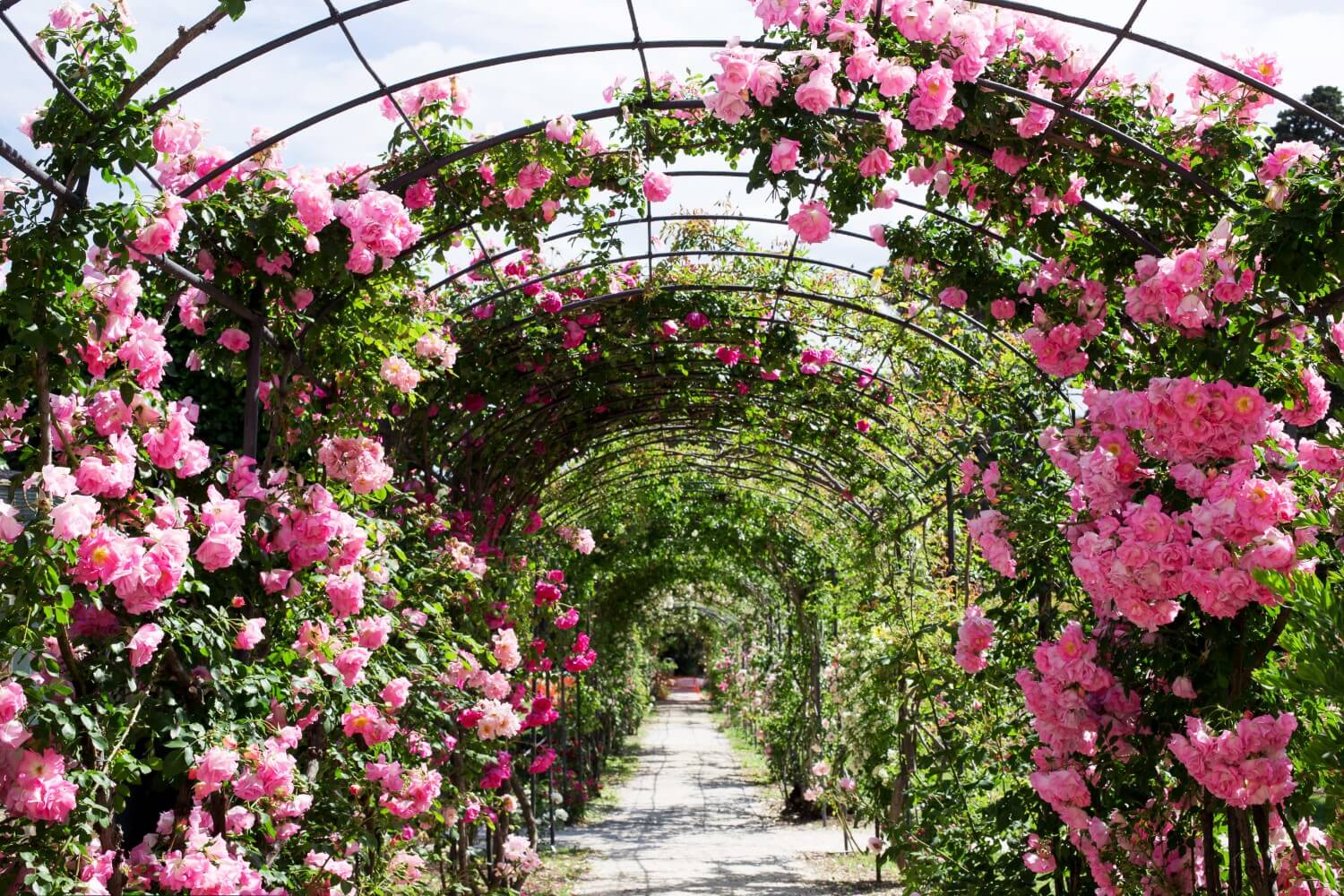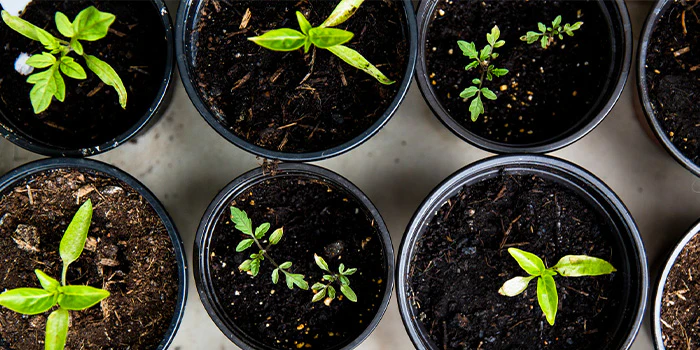Climbing Roses Care Tips - Get Beautiful Blooms
Unlock the secrets to climbing roses with our comprehensive care tips. From planting to pruning, learn how to achieve beautiful blooms year after year.
Dec 22, 202413.5K Shares254.7K Views

Climbing roses are a stunning addition to any garden, adding height, color, and fragrance to fences, arbors, and trellises. With their vigorous growth and beautiful blooms, these roses can transform a simple landscape into a breathtaking retreat.
Successfully cultivating climbing roses requires a bit of knowledge and care. This comprehensive guide will provide you with essential tips for selecting, planting, and nurturing climbing roses, ensuring they thrive and bring beauty to your garden for years to come.
Climbing Rose Overview
Climbing roses, scientifically known as Rosa setigera, are perennial plants prized for their ability to scale structures and their stunning floral displays.
Plant Attributes
- Common Name: Climbing Rose, Prairie Rose, Climbing Wild Rose
- Botanical Name: Rosa setigera
- Family: Rosaceae
- Mature Size: 6-12 ft. tall, 3-4 ft. wide
- Sun Exposure: Full sun
- Soil Type: Loamy, well-drained
- Soil pH: Acidic (6.0 to 6.5)
- Bloom Time: Summer, fall
- Flower Color: Red, pink, orange, yellow, white
- Hardiness Zones: Zones 5-9 (USDA)
- Native Area: North America
Choosing The Right Climbing Roses
Selecting the right climbing rose is crucial for achieving your garden goals.
- 'New Dawn': A vigorous climber with soft pink flowers, reaching up to 15 feet.
- 'Russell's Cottage Rose': Features deep crimson blooms that fade to pink, growing 10 to 20 feet tall.
- 'Sombreuil': Produces large creamy white blooms with a delightful fragrance, ideal for training on structures.
- 'Lady Banks': Known for its spring blooms, available in yellow and white, and can grow over 20 feet.
Evaluate your garden's conditions, including sunlight, space, and climate, to choose a variety that will thrive in your environment.
Where To Plant Climbing Roses
Planting location is key to the success of your climbing roses.
- Soil: Climbing roses prefer moist but well-drained, fertile soil. Enhance your soil by adding organic matter such as compost or peat moss to improve fertility and drainage.
- Sunlight: Aim for at least four to six hours of direct sunlight each day to encourage robust blooms. Most climbing roses thrive in full sun, though some varieties can tolerate partial shade.
- Airflow: Choose a spot with good air circulation to help prevent diseases and encourage healthy growth.
How To Plant Climbing Roses
- Timing: For best results, plant climbing roses as bare-root, dormant plants in late winter or early spring. This timing allows the roots to establish before the heat of summer.
- Preparation: Dig a hole at least twice the width and depth of the root ball. Incorporate well-rotted organic matter into the soil to improve fertility and drainage.
- Planting: Place the rose in the hole, ensuring it is at the same depth as it was in its pot. Backfill and water thoroughly to eliminate air pockets.
- Support Structures: Ensure you have a sturdy support structure in place, such as a trellis or fence, to train the climbing rose. Secure the stems loosely to the support as they grow.
Ideal Growing Conditions
Climbing roses thrive in specific conditions that promote healthy growth:
- Light: Provide at least four to six hours of direct sunlight each day for robust blooms.
- Soil: Rich, loamy soil is best. Enhance your soil by adding organic matter such as compost or peat moss.
- Water: Water consistently, especially during the first year. Deep watering in the mornings is recommended, but avoid waterlogged soil to prevent root rot.
- Temperature and Humidity: Ideal temperatures range from 50ºF to 80ºF. Provide some afternoon shade in regions with extreme heat.
Growing And Support Structures
Climbing roses do not twine or cling naturally; they require support to grow effectively. Secure them loosely to trellises, fences, or arbors.
Training the stems to grow laterally rather than vertically can promote more blooms by allowing short spurs along the central stems to develop.
Tips For Training Climbing Roses
- Use soft ties, such as jute twine or soft fabric strips, to secure the stems.
- Regularly check the ties to ensure they are not constricting growth.
Watering Techniques
Consistent watering is vital, especially in the first year after planting. Ensure deep watering sessions, but monitor soil moisture levels to prevent over-saturation, which can lead to fungal diseases.
Watering Checklist
- Water deeply but infrequently, aiming for about 1 inch of water per week.
- Water in the morning to allow foliage to dry by evening.
- Adjust watering frequency based on rainfall and temperature.
Fertilization Guidelines
Feed climbing roses with a balanced fertilizer in the spring to support healthy growth.
Fertilization Steps
- Use a balanced fertilizer that provides equal parts nitrogen, phosphorus, and potassium.
- Fertilize every 4-6 weeks during the growing season for optimal results.
- Stop fertilizing 8 weeks before the first frost to avoid stimulating new growth.
Pruning And Maintenance
Regular pruning helps maintain the shape and encourages blooming. For those looking to improve the overall health of their roses, understanding how and when to prune Rosescan make a significant difference. Proper timing and techniques can lead to more vibrant and flourishing plants throughout the growing season.:
Pruning Tips
- When to Prune: Prune climbing roses in late winter or early spring, after the main flush of blooms.
- Techniques: Remove dead or damaged wood and any stems growing in the wrong direction. Prune side shoots to promote airflow and healthy growth.
Propagation Techniques
Climbing roses can be propagated from hardwood cuttings or semi-ripe cuttings:
Steps For Propagation
- Hardwood Cuttings: Take cuttings during dormancy in winter. Cut 6-8 inches from a healthy plant, ensuring a clean cut.
- Semi-Ripe Cuttings: In late summer, cut 10 inches from a current year’s growth. Remove all but a couple of leaves and plant in potting soil.
Pest And Disease Management
While climbing roses are relatively resistant to diseases, they can be affected by common pests and diseases:
Common Pests And Diseases
- Pests: Watch for aphids, scales, and whiteflies. Use insecticidal soap or a strong blast of water to manage infestations. For a more eco-friendly approach, organic pest controlmethods like introducing beneficial insects or using neem oil can help protect your plants without harmful chemicals.
- Diseases: Fungal diseases like black spot and powdery mildew can occur. Ensure good air circulation and remove any infected leaves.
Common Problems With Climbing Roses
Understanding common problems can help you take proactive measures:
Key Issues And Solutions
- Curling Leaves: This may indicate high temperatures. Provide some afternoon shade and avoid over-pruning.
- Foliage Drop: Over-fertilization or high soil alkalinity can cause leaf drop. Maintain balanced nutrients and monitor soil pH.
Climbing Rose Varieties
Consider these notable climbing rose varieties for your garden:
- 'Alberic Barbier': Pale yellow buds unfurl to ivory flowers with a fruity fragrance.
- 'Don Juan': Classic red blooms with a citrusy fragrance.
- 'Golden Showers': Constantly blooming with ruffled yellow flowers.
Companion Plants For Climbing Roses
Enhance your climbing roses with companion plants that complement their beauty:
- Foxglove: Adds height and color to your garden.
- Delphinium: Introduces vertical interest with blue flowers.
- Lady’s Mantle: Provides interesting texture with its fuzzy foliage.
Seasonal Care Tips
Adapting care practices based on the season can help your climbing roses thrive:
- Spring: Fertilize and prune as needed.
- Summer: Monitor watering and deadhead spent blooms.
- Fall: Clear debris, mulch the base, and prepare for winter.
- Winter: Protect with burlap or mulch and avoid pruning close to frost. Taking the right steps to protect your roses from winterwill ensure that they stay healthy and are ready to thrive again when the warmer months return.
Visual Elements
Consider incorporating diagrams or images showing:
- Training techniques for climbing roses.
- Close-ups of different climbing rose varieties.
- Seasonal care tasks in action.
Troubleshooting Guide
- Curling Leaves: Adjust watering practices and provide shade.
- Pest Infestations: Use insecticidal soap or natural predators.
- Fungal Diseases: Ensure good airflow and regular cleanup of debris.
FAQs
How Can I Encourage Climbing Roses To Bloom?
Regular deadheading and training canes to grow horizontally promote more blooms.
What Should I Do If My Climbing Roses Are Not Blooming?
Check for inadequate sunlight, nutrient deficiencies, or water stress.
Are Climbing Roses Deer-resistant?
While not entirely deer-proof, using repellents can help protect them.
Conclusion
Caring for climbing roses involves understanding their unique needs, from selecting the right varieties to ensuring proper support and maintenance. By following these comprehensive tips, you can create a vibrant, blooming display that enhances your garden's beauty. Enjoy the journey of cultivating climbing roses and watch your garden transform into a stunning floral haven.
Jump to
Climbing Rose Overview
Choosing The Right Climbing Roses
Where To Plant Climbing Roses
How To Plant Climbing Roses
Ideal Growing Conditions
Growing And Support Structures
Watering Techniques
Fertilization Guidelines
Pruning And Maintenance
Propagation Techniques
Pest And Disease Management
Common Problems With Climbing Roses
Climbing Rose Varieties
Companion Plants For Climbing Roses
Seasonal Care Tips
Visual Elements
Troubleshooting Guide
FAQs
Conclusion
Latest Articles
Popular Articles

